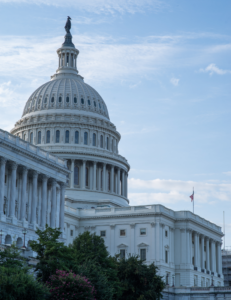Bipartisan Progress on Pell Grant Expansion, but Hurdles Remain
The House wants to expand the Pell Grant to shorter career training programs. To pay for it, a new bill would cut off federal student loans to the nation’s wealthiest private colleges, starting in July.

As Congress gears up to head home for the holiday season, proponents who have hoped to see a breakthrough on the long-running issue of expanding Pell Grants to career-training programs lasting fewer than 15 weeks have received an early gift—a bipartisan deal in the House.
Key lawmakers in both parties have wrangled for years over the expansion, with talks breaking down over whether to include for-profit institutions and how to ensure the programs are of high quality. Supporters of what’s commonly referred to as short-term or workforce Pell say it will help low-income students access training programs they need to find better-paying jobs. Opponents have questioned whether the Pell Grant should be used as a workforce development tool—and whether the short-term programs actually pay off.
Still, the Pell Grant expansion has steadily gained momentum and garnered bipartisan support in recent years; experts predicted that if any higher-education bill could pass this Congress, it would be this.
The House bill, introduced last week and officially dubbed the Bipartisan Workforce Pell Act, could prove them right. The House Education and Workforce Committee will mark up the bill today.
Experts say the bipartisan breakthrough, which would expand the Pell Grant to workforce programs lasting between eight and 14 weeks, represents a meaningful step forward, especially since the committee’s top Republican and Democrat co-sponsored the legislation. But for some colleges and universities, the bill amounts to a lump of coal. Lawmakers are proposing to cut off federal student loans to a couple of dozen wealthy private institutions, such as Harvard University and Stanford University, that are subject to the endowment tax—a provision that could hurt the legislation’s chances of passing the House and Senate and becoming law.
Higher education associations say the proposal undermines the federal student aid system and would be an “unprecedented shift” away from providing loans to students based on their individual need. The bill would cut off student loans to those institutions starting July 1, 2024. The short-term Pell bill authorizes $160 million in new spending toward implementing the expansion.
Expanding the Pell Grant to short-term programs has been a priority for the House committee, and the release of the legislation comes after months of negotiations between the Republicans and Democrats. Lawmakers also will mark up a bill Tuesday that will reauthorize the Workforce Innovation and Opportunity Act, which includes funding to support skills-based training and programs at community colleges.
The American Association of Community Colleges, which has worked for years to make short-term Pell a reality, supported both bills in a letter sent Monday to the committee but noted that the eligibility standards are stricter than those for other types of programs.
“These ‘guardrails’ are so rigorous that in some cases, quality community college workforce education programs will find it difficult to qualify for support,” the letter said. “Therefore, we look forward to working with the committee to refine these provisions, particularly the path to eligibility for new programs.”
The association also urged the committee to find an alternative way to offset the new expenses in the short-term Pell bill.
David Baime, senior vice president for government relations at AACC, said the WIOA reauthorization is a significant advancement in improving the underlying statute. The bill codifies a $65 million grant program to help community colleges improve their workforce education offerings.
“We thank you for the many hours that have been devoted to crafting this legislation and welcome its bipartisan nature,” AACC wrote in a letter to the committee. “Together these bills will help our current and future students better participate in our economy, enabling them to generate family-sustaining wages.”
‘Too Fast and Too New’
NAICU estimates that about 64,000 students would lose $1.8 billion in federal student loans under the short-term Pell bill. The proposal would affect both undergraduate and graduate students.
The offset hadn’t been part of previous short-term Pell proposals and caught higher education groups by surprise. “I think it’s too fast and too new to know what will happen,” Flanagan said. “It’s a bipartisan agreement—I don’t know who suggested this.”
The 1.4 percent tax on net investment income applies to all private colleges with endowments larger than $500,000 in assets per student.
About 50 to 60 institutions are subject to the tax, according to the National Association of College and University Business Officers, which said there isn’t a publicly available list. The Wall Street Journal reported in October 2022 that about 33 institutions were taxed in 2021. Other public reporting of endowments shows that students at Harvard, Stanford, Grinnell College, Berry College and Claremont McKenna College, among others, likely would be ineligible for federal student loans.
“They’re saying the federal government is going to give really good loans only to people who choose certain institutions,” Flanagan said. “It undermines the premise of the federal student aid program. Certainly when Congress starts to say, ‘We don’t like this kind of institution over another type of institution’—once they start doing this, they can do it any way they want, depending on the philosophy of whatever party is in control.”
